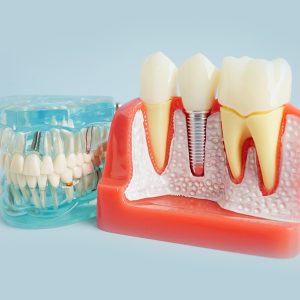Why Invisalign in Paoli, P A Is the Best Choice for a Confident Smile

A confident smile starts with straight, healthy teeth, but you don’t need metal braces to achieve it. With Invisalign in Paoli, PA, you can straighten your teeth using smooth, removable trays that are nearly invisible, letting you smile confidently throughout treatment. Designed for busy adults and teens, Invisalign blends convenience, comfort, and modern technology to transform smiles with minimal lifestyle changes.
A Modern Way to Straighten Your Smile
Many adults and teens want straighter teeth without the look or lifestyle limits of fixed braces. That’s where Invisalign helps. This clear aligner system uses a sequence of custom trays to guide teeth into healthier positions while keeping your smile natural in photos, meetings, and everyday life.
The aligners fit comfortably and are almost invisible, designed specifically for your smile. You can take them out to brush, floss, or eat normally , a simple detail that makes daily care far easier than with metal braces. Your dentist builds a plan around your bite, gum health, and schedule so treatment fits your routine instead of disrupting it.
How the Process Works
Every case begins with a consultation. Your dentist reviews your goals, checks your tooth and gum health, and studies your bite. Instead of using messy impressions, digital scans create an exact 3D image of your teeth. From there, your treatment is mapped in stages, with each aligner worn for about one to two weeks before moving to the next.
Treatment usually takes about a year to a year and a half, depending on how complex your case is and how regularly you wear the aligners. Short check-ins every six to eight weeks help confirm progress and keep you on track without lengthy appointments.
Why Patients Choose Clear Aligners
Many patients start Invisalign for a better-looking smile, but they’re often surprised by the health benefits that come with it:
- Easier daily care: Straight teeth are simpler to brush and floss, helping prevent gum inflammation and cavities.
- Comfortable surfaces: Smooth plastic edges reduce cheek and lip irritation that braces can cause.
- Flexible routines: Aligners come out for meals and brushing, so you can still enjoy your favorite foods.
- Predictable results: Computer planning helps your dentist guide tooth movement carefully and comfortably.
These advantages make aligners a practical choice for students, professionals, and parents who want orthodontic progress without major changes to their day.
Is Clear Aligner Therapy Right for You?
Clear aligners can fix crowding, spacing, and many bite concerns. During your exam, your Paoli dentist will determine if aligners alone can reach your goals or if a combined approach is better. Aligners work best when worn 20–22 hours daily, so consistency matters. Patients who follow their plan closely usually see steady progress right on schedule.
What to Expect at Each Visit
- Consultation and Records: Your dentist reviews your oral health, examines your bite, and takes detailed digital scans.
- Treatment Preview: You’ll see an animation showing how your teeth will move and how long it should take.
- Delivery and Instructions: At your first fitting, you’ll receive several sets of aligners and learn how to insert, remove, and care for them.
- Progress Appointments: Quick check-ups every few weeks confirm that your teeth are moving as expected. If needed, your dentist may add small, tooth-colored attachments for better control. These are smooth, subtle, and removed when treatment ends.
Day-to-Day Life With Aligners
Most people adjust to speaking with trays within a day or two. A mild tenderness sometimes appears when switching to a new set, a normal sign that the aligners are doing their job. Keeping a travel case handy makes meals easier, and drinking plain water with aligners in is perfectly fine. For coffee, tea, or colored drinks, it’s best to remove them first to avoid staining.
Your daily routine remains the same. Because the trays are clear, most people won’t notice you’re wearing them, and check-ups fit easily into a busy schedule.
Life After Treatment: Retainers and Stability
When your teeth reach their final position, retainers keep them steady as the gums and bone adapt. Your dentist will suggest a schedule, usually nightly at first, then taper as stability improves. Retainers are vital because even minor pressure from chewing can shift teeth over time. With consistent wear, regular dental checkups, and good hygiene, your new smile can stay beautifully aligned for years.
Answers to Common Questions
Most patients adjust within a couple of days. Any slight lisp usually fades quickly as your tongue adapts.
You might feel mild pressure with a new set, which is a sign they’re working. Switching to a new tray before bed can make this transition smoother.
Whitening is possible in some phases, but your dentist can advise on timing based on your tooth sensitivity and progress.
Call the office for instructions. You may wear the previous set temporarily or move ahead to the next, depending on where you are in the sequence.
Finding the Right Provider
When searching for an Invisalign dentist near me, focus on experience, communication, and technology. Ask about digital scanning, progress tracking, and how many aligner cases the practice manages each year. A thoughtful provider explains the plan in plain language and checks in often to make sure everything feels comfortable and predictable.
Choosing a trusted dental clinic in Paoli ensures your experience is smooth from start to finish, with a team that supports you through every stage , from consultation to your final retainer.
A Thoughtful Path to a Healthier, More Confident Smile
Clear aligners make it easier to move your teeth gently while keeping your routine comfortable and your smile natural. With steady wear, consistent check-ins, and a good aftercare plan, many patients reach their goals without major lifestyle changes. If you’re ready to explore your options or want a personalized consultation, schedule a visit with Dentist of Paoli.






